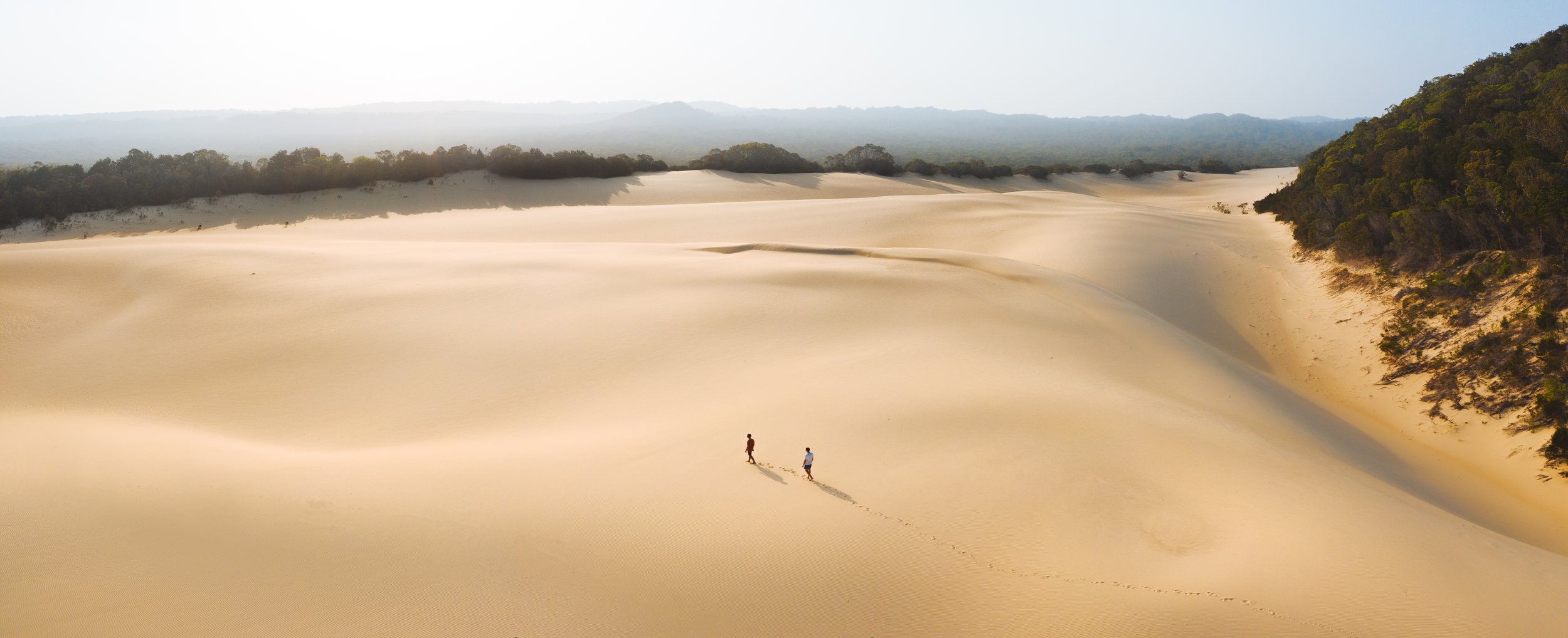
The Formation of K’gari
K’gari has been formed over hundreds of thousands of years as winds, waves, and ocean currents carried sands from the distant southeast of Australia and even from Antarctica (before the continents drifted apart). These sands were deposited in a zigzag pattern along the Queensland coast, forming a string of sand islands.
These sand islands stretch from South Stradbroke Island, off the Gold Coast, all the way to K’gari, located just south of the Great Barrier Reef. The largest among them, K’gari, originated from the accumulation of sands over a terrain that was originally low and hilly, shaped millions of years ago by volcanic activity.
While most of the sand that makes up K’gari has come from the far south-east of Australia, some of it has travelled for thousands of kilometres and millions of years from Antarctica, starting its journey before Australia and Antarctica separated from each other.
About 700 million years ago, Antarctica had mountain ranges that rival the modern-day Himalayas. These mountain ranges were eroded with the resulting sands being accumulated on the continental shelf where K’gari now lies.
Periodic changes in the earth's temperature have created changes in sea levels which have helped to form the island.
During these periods, dune building was at its most prolific with sand sweeping across the island faster than plants could stabilise it. This loose, bare sand formed U or V-shaped parabolic dunes which then stabilised over time.
This dynamic landscape has formed a series of overlapping sand dune systems dating back at least 700, 000 years. The shifting sands of K’gari, and those of nearby Cooloola, have continually concealed and revealed a unique geological history.
K’gari's dunes have the longest and most complete age sequence of coastal dune systems in the world.
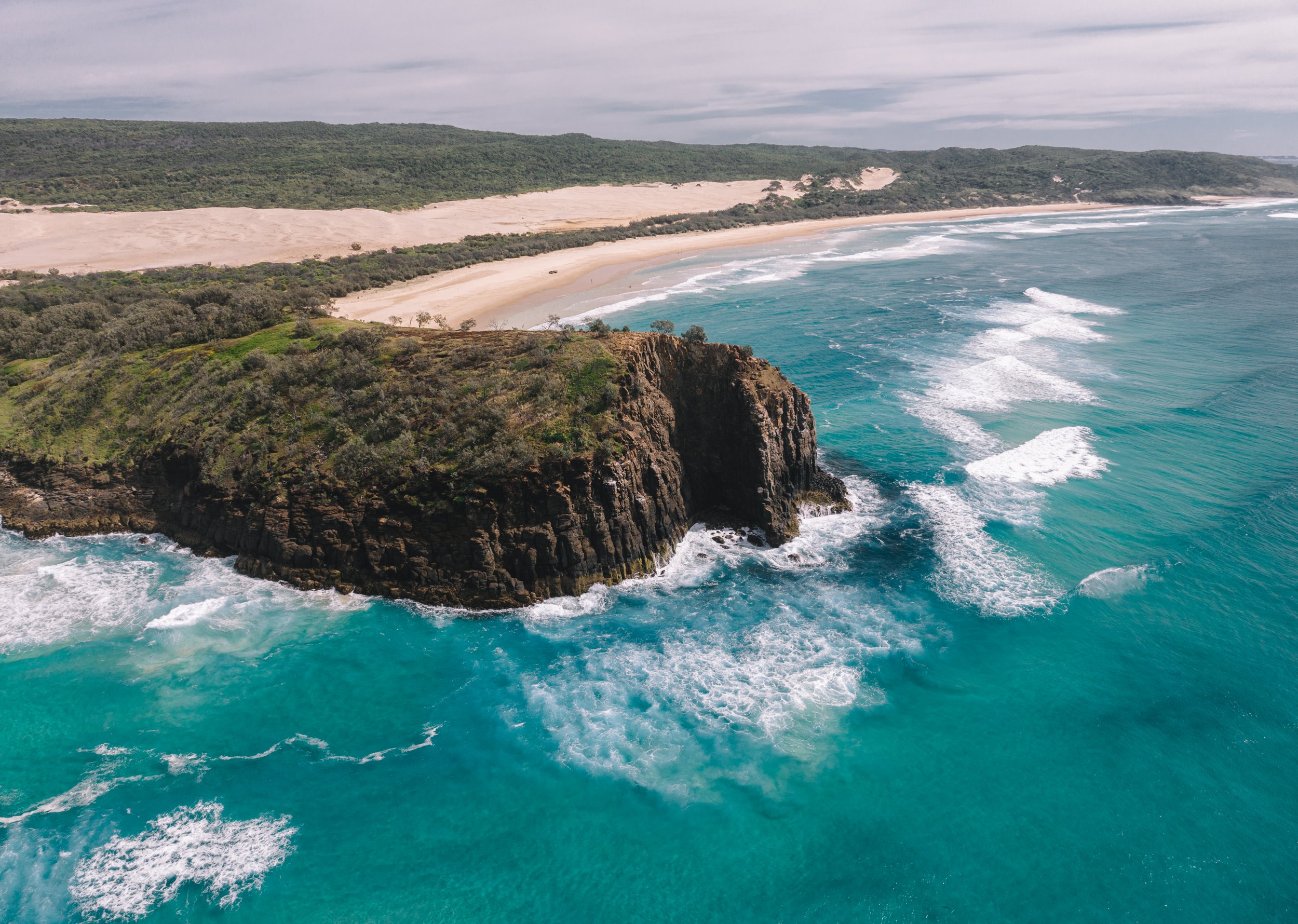
Indian Head
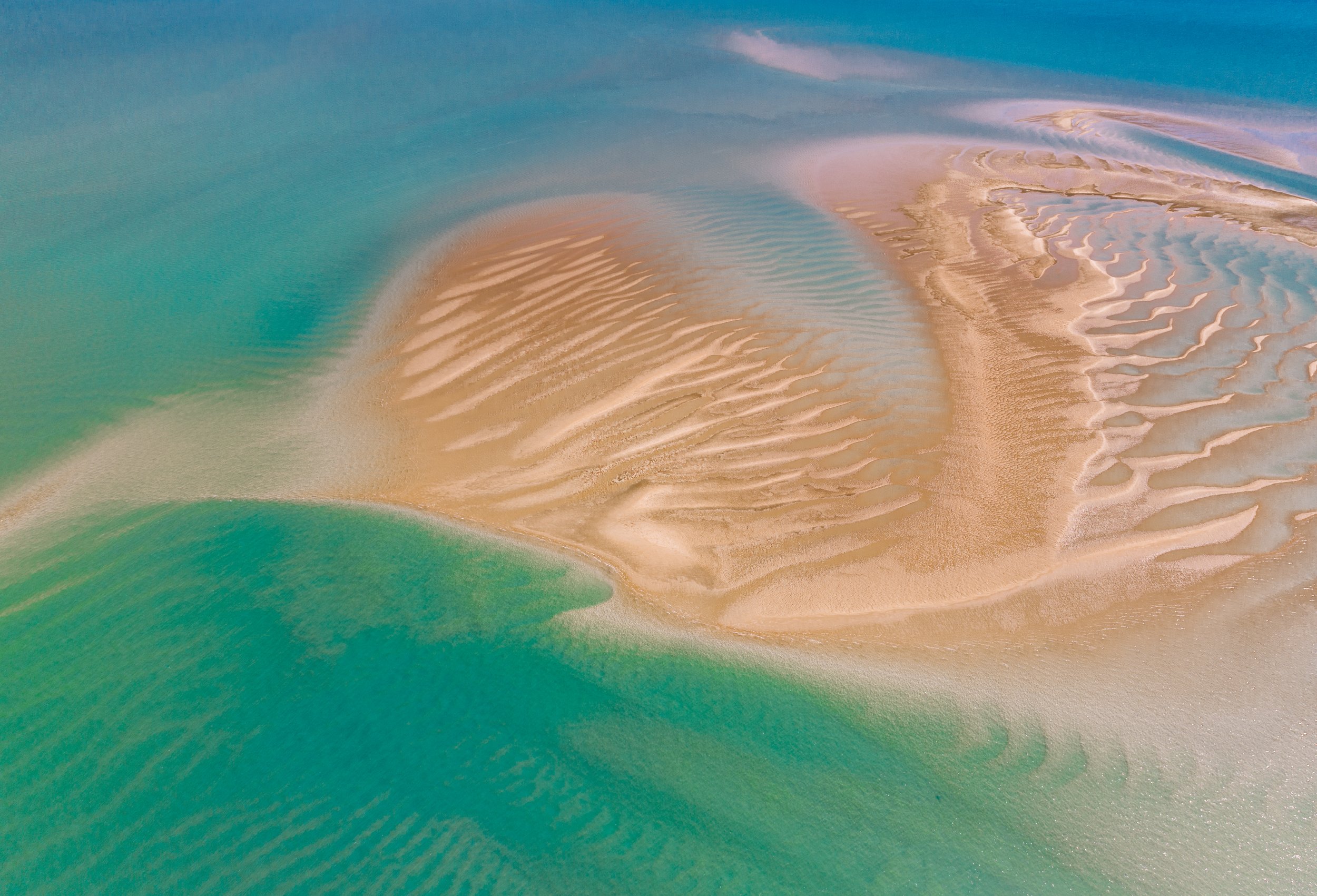
Sand Bank
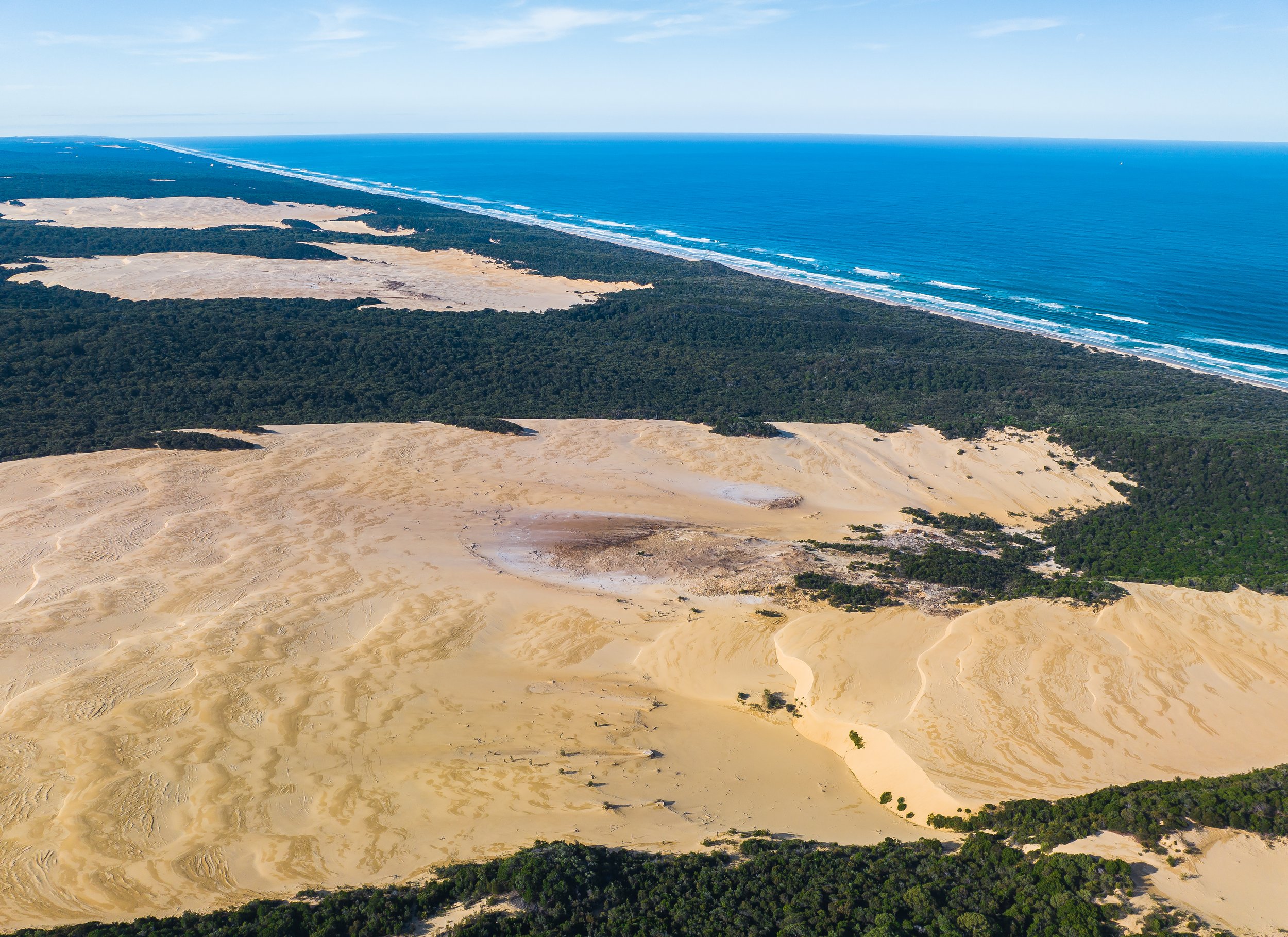
Sand Blow
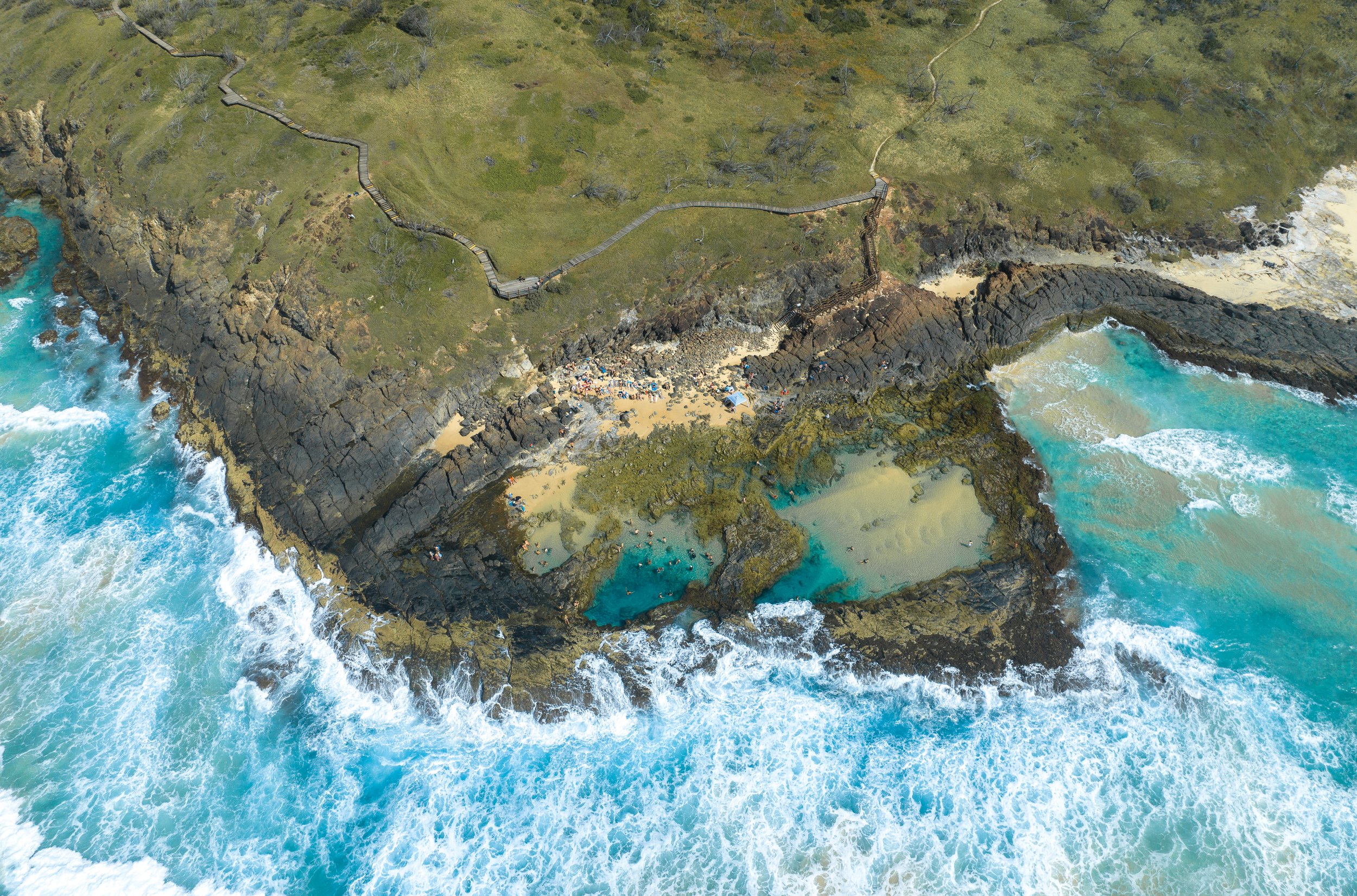
Champagne Pools
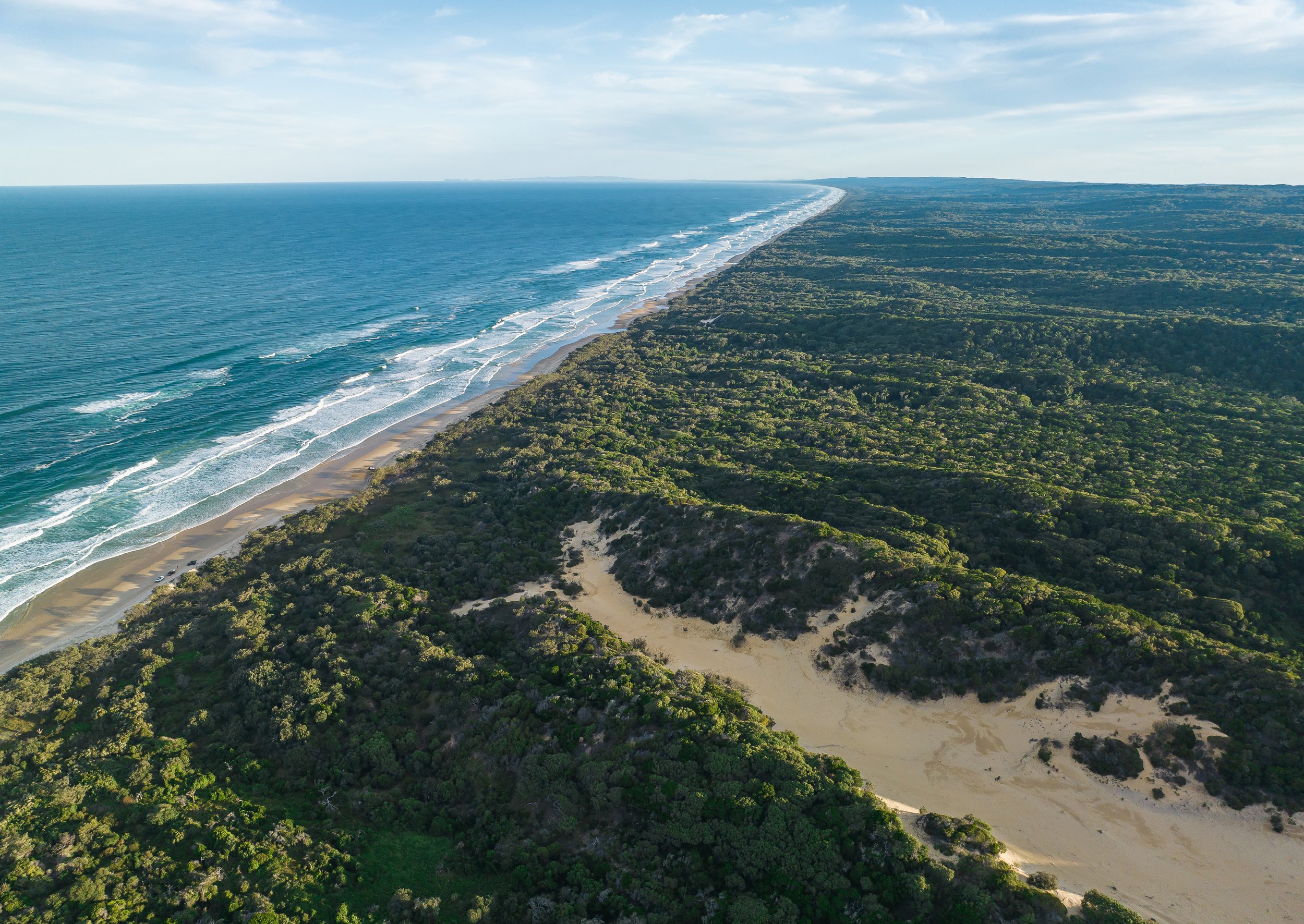
75 Mile Beach
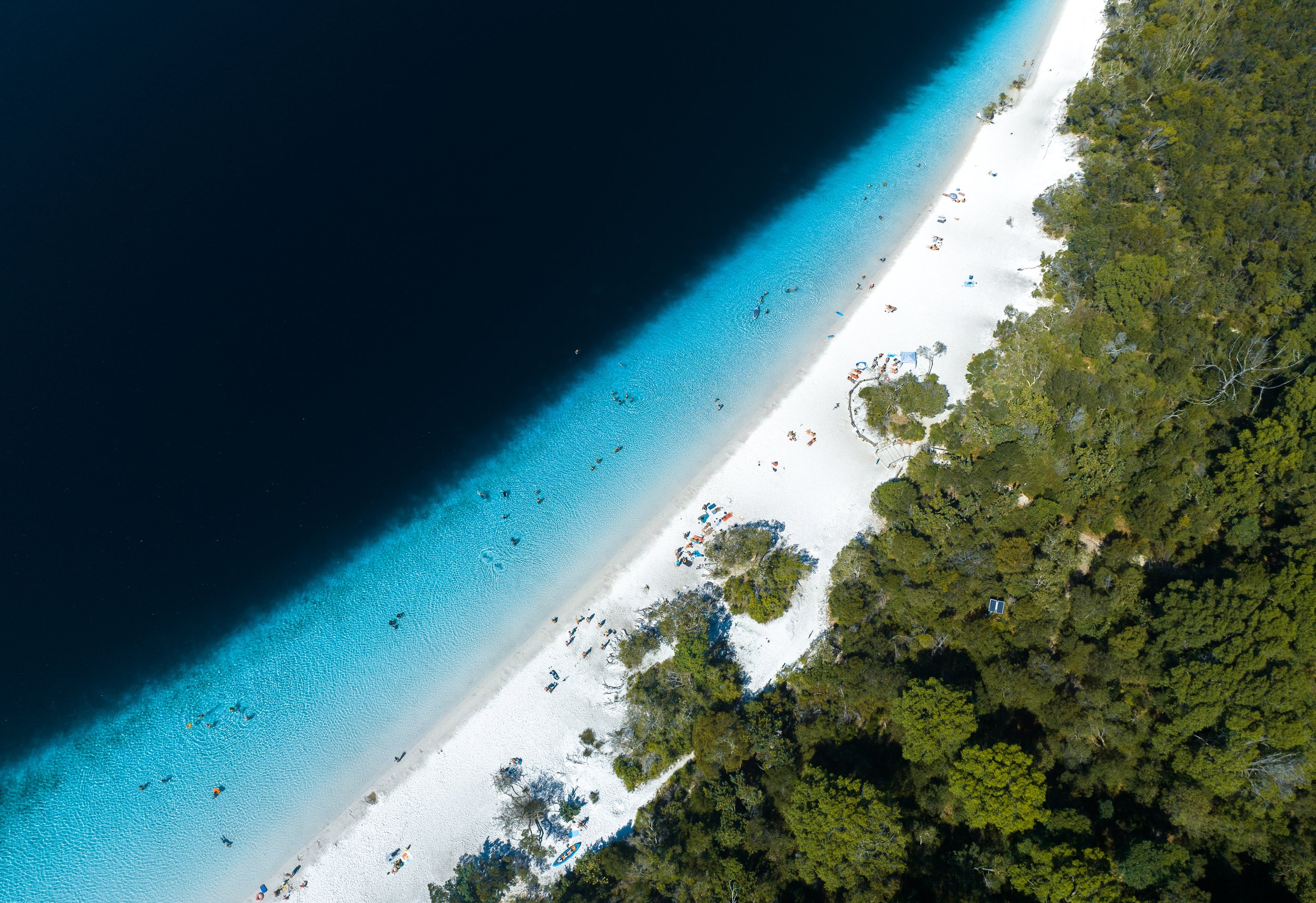
Lake McKenzie